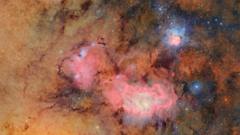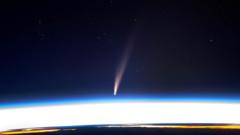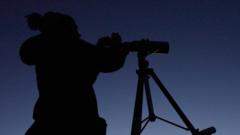Astronomers report on two intriguing black holes: one, a star-consuming entity, has been devouring cosmic bodies, while the other represents a rare three-body configuration, stirring interest among scientists.
Celestial Frights: Two Black Holes Make Waves in the Cosmic Realm

Celestial Frights: Two Black Holes Make Waves in the Cosmic Realm
Recent discoveries highlight the dynamic and perilous nature of black holes, including a serial star devourer and a unique three-body system.
Just in time for Halloween, the universe has delivered some spine-chilling news involving two renowned black holes. One of these menacing entities is a notorious "serial killer," threatening its second star in a span of five years. Meanwhile, the other is part of a groundbreaking black-hole trio, a first-of-its-kind configuration that defies conventional astrophysical wisdom by including a black hole, which was never expected to join such systems.
Black holes, the gravity wells predicted by Einstein's general relativity over a hundred years ago, remain a subject of fascination for astronomers. Our Milky Way galaxy houses millions of these phenomena, remnants of stars that have died, imploded, and collapsed into infinitesimal points of undying gravity. Additionally, every galaxy, including our own, is believed to harbor a supermassive black hole, ranging from millions to billions of times the mass of our Sun, lurking at their centers.
The "killer" black hole drew attention five years ago when it emitted a dazzling flare observed from a galaxy located 215 million light-years away. This event, known as a "tidal disruption event" called AT1910qix, unfolded when a star ventured too near the supermassive black hole at the galaxy's heart. Over a five-month period, the relentless gravitational grip of the black hole tore the wayward star apart, transforming it into a ring of debris circling the black hole. In the end, half of this material succumbed to its fate, while the other half drifted away, forming an expanding disc.
However, as the remains spread out, they now obstruct another nearby star's path. Every 48 hours, this star collides with the leftover disc on its orbit around the black hole, triggering flashes of intense X-rays and other radiation. An international research team led by Matt Nicholl from Queen's University Belfast has monitored these developments using various space telescopes, including the Chandra X-ray Observatory and the Hubble Space Telescope. They recently shared their findings in the prestigious journal Nature.
The cosmic drama unfolding with these black holes provides not only thrilling updates but also vital insights into the complex and mysterious nature of our universe.













